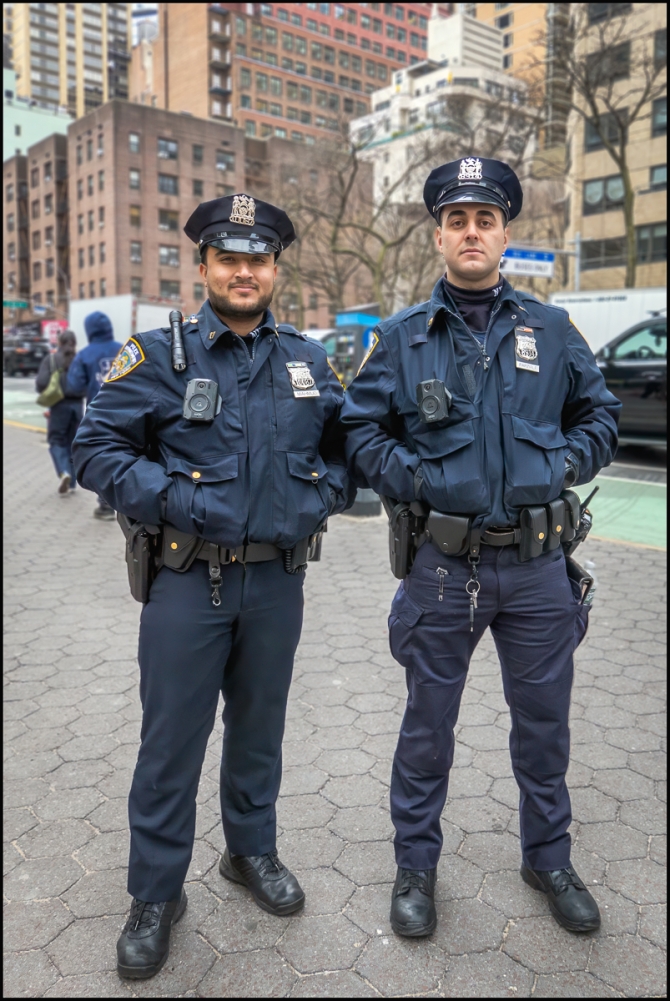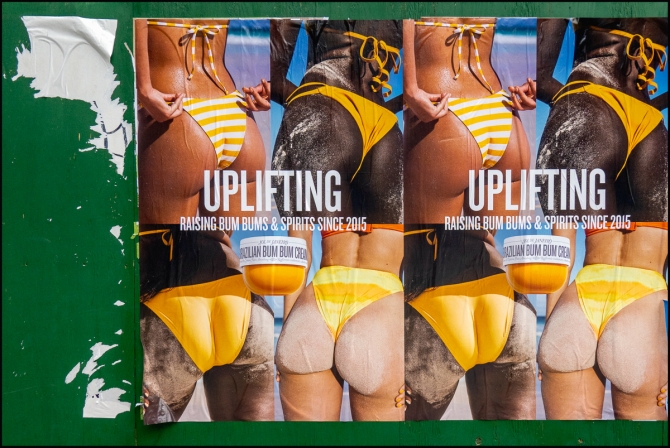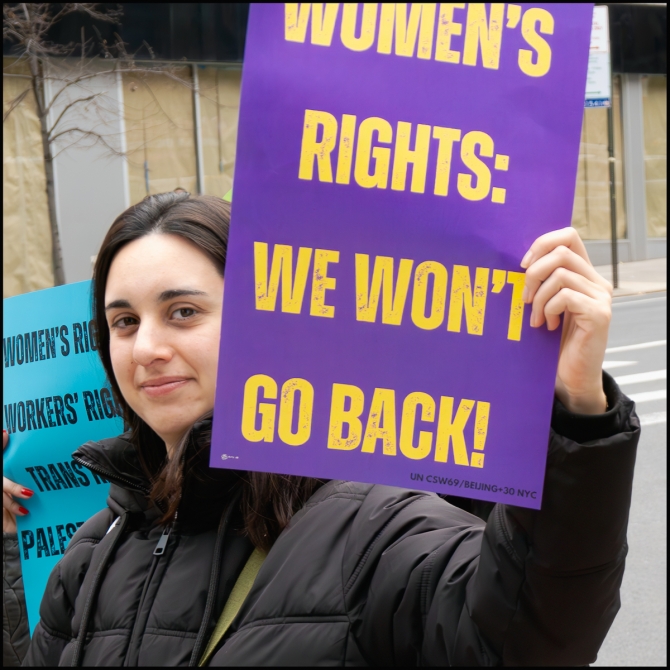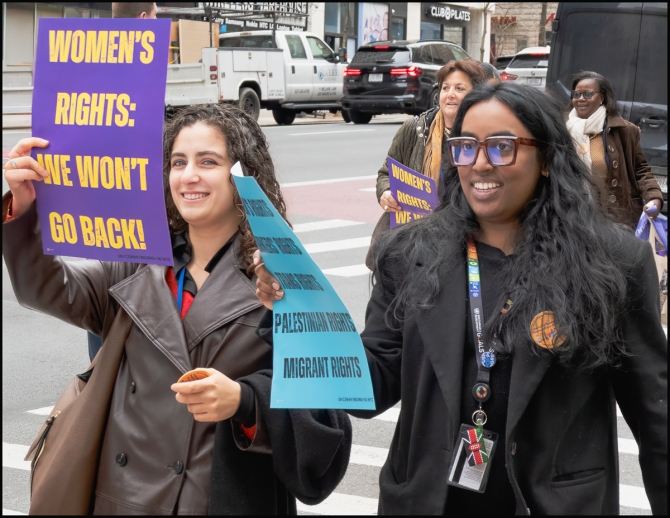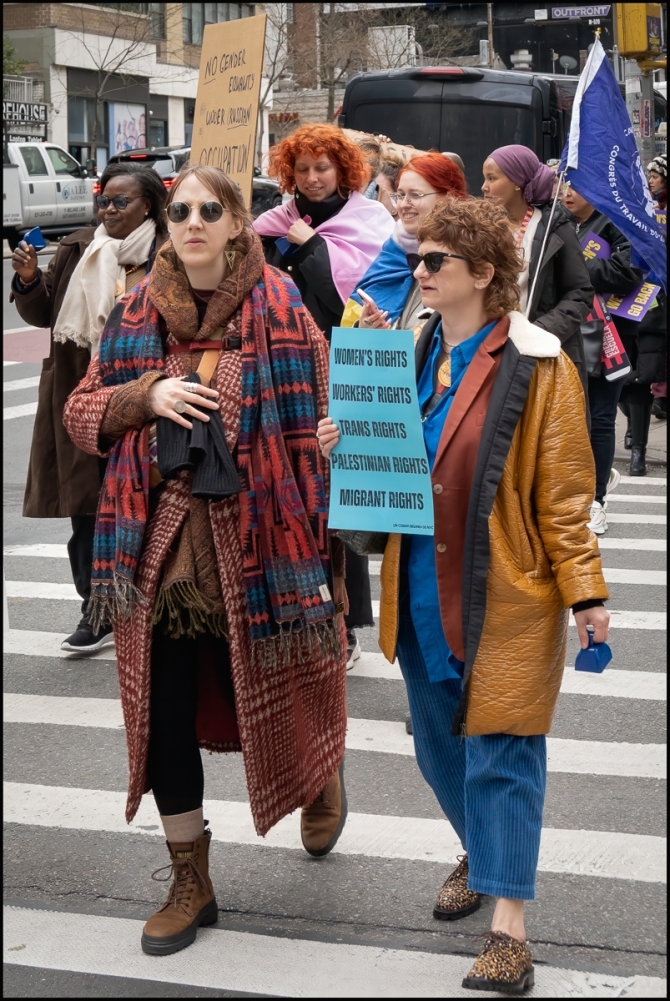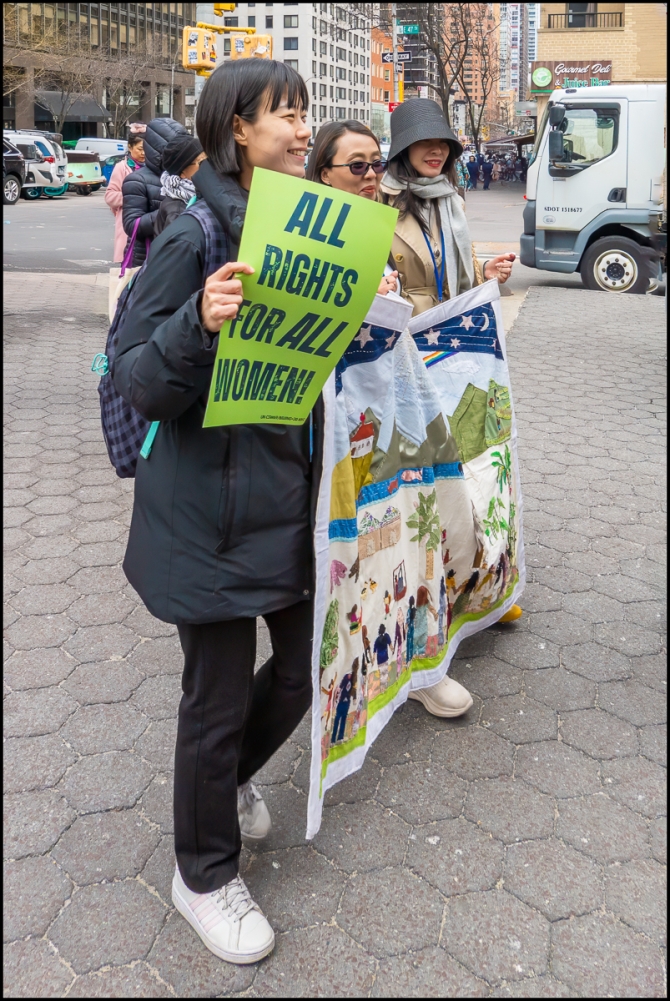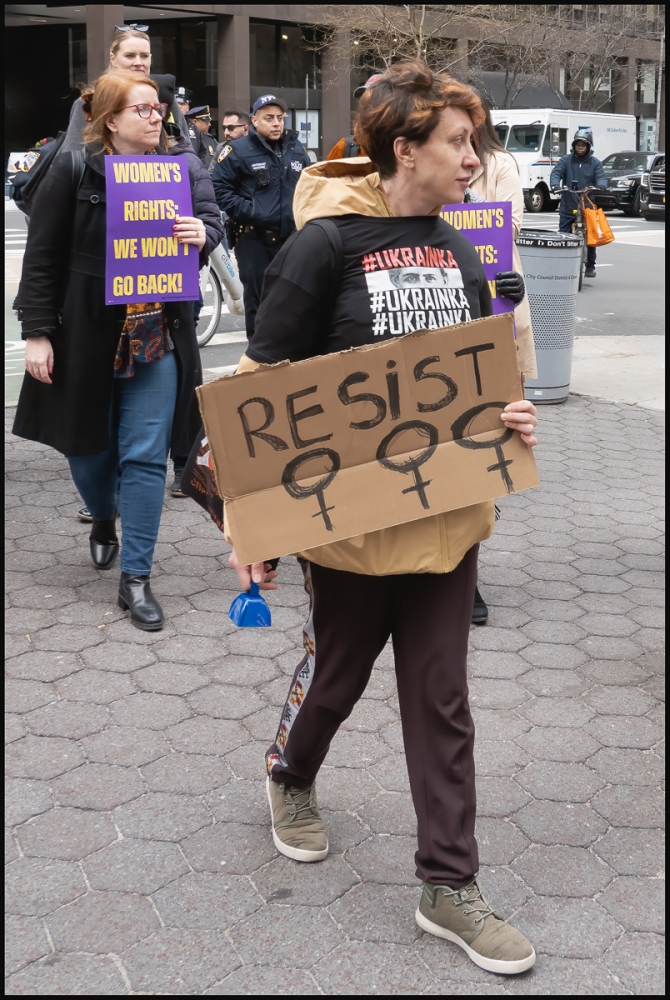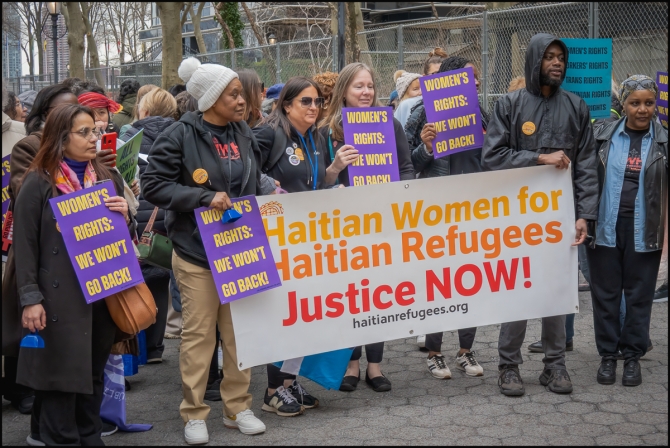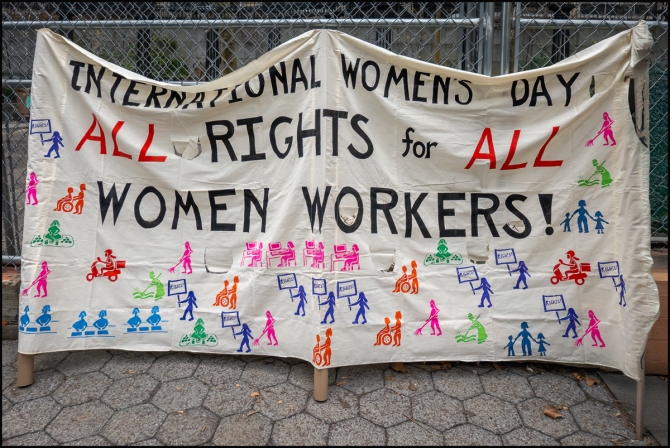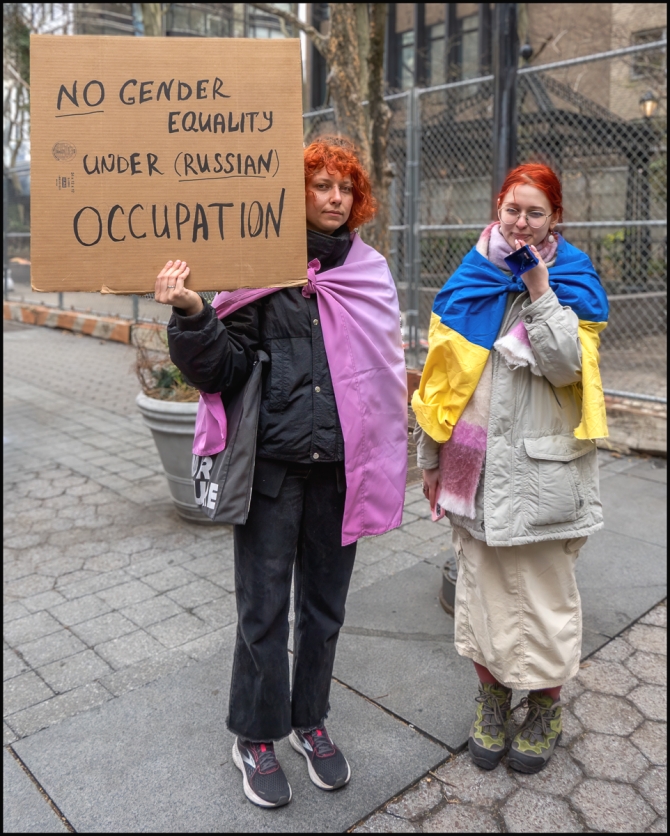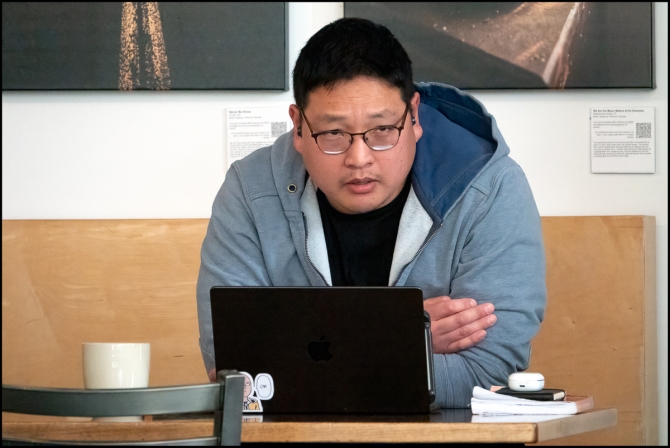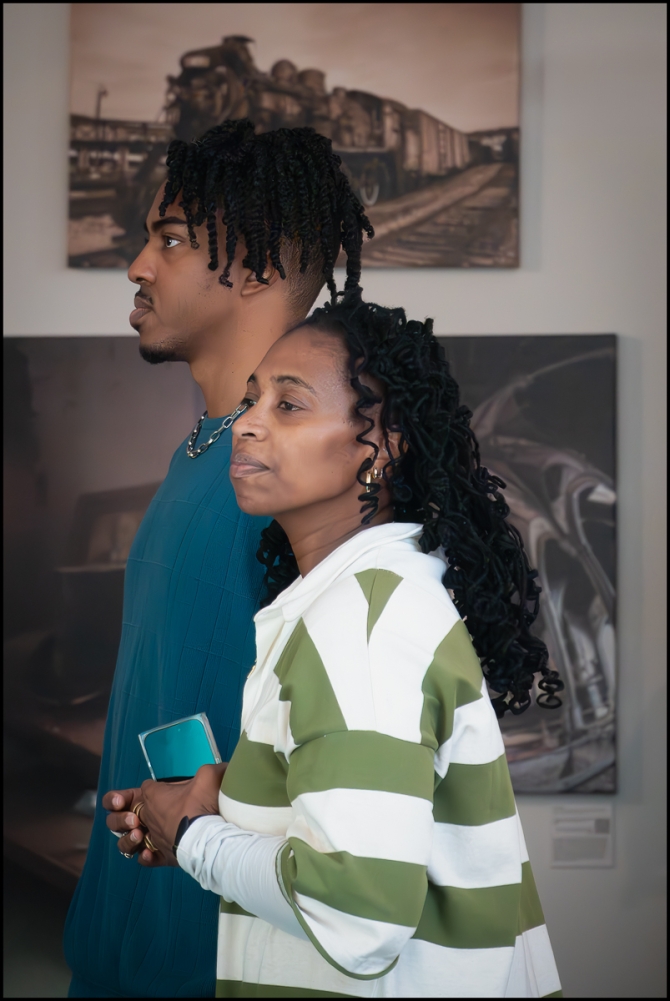I assume these two New York City Officers were there to keep an eye on the demonstration. However, the demonstration was orderly and very well behaved, so they didn’t have much to do other than watch.
I asked them if I could take their photograph, and they very kindly told me that I could. So, I took the picture and showed it to them on the rear screen. They seemed to be satisfied with it.
I liked the difference in their expressions. The officer on the left is smiling, while the one on the right seems to be trying to appear a little tougher.
Taken with a Sony RX10 IV.

